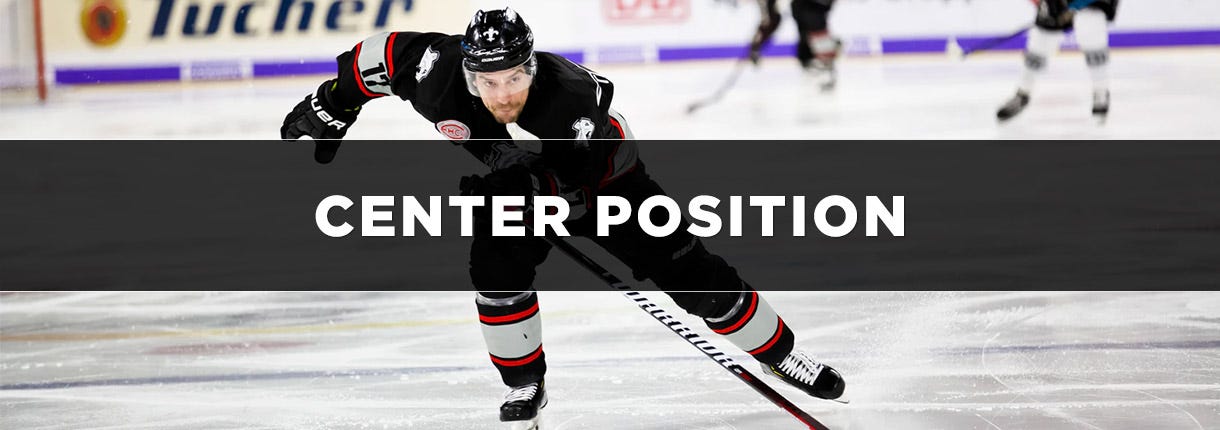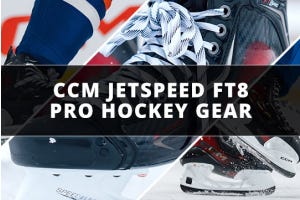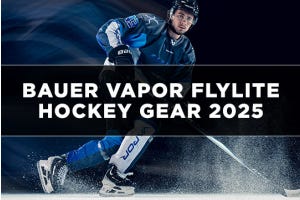Centerman: How to Play the Center Position in Ice Hockey

From a young age Ice Hockey players are taught the positions within the game. Each one has specific duties that are taught, helping make them a successful player. Understanding these roles and jobs for each position can help them and the team improve greatly.
Centers in the U.S. go by the name “Center”, while in Canada the term “Centre” is used, and in this article, we’ll explain the roles and responsibilities of this position, as well as give some tips and training drills to help improve your game!
What is a Centerman?
A Centerman in Ice Hockey is typically seen as the quarterback of the team, especially while on offense. He will be the player tasked with winning faceoffs, keeping the flow of the play moving while in the offensive zone, and will oftentimes be the player leading breakouts from the defensive zone into the offensive zone.
Top Skills for the Center Position
- Great Hockey IQ and vision
- Great passing ability
- Strong skating ability
- Strong stick skills (applies especially to faceoffs)
- Creative playmaking abilities
Listed above are the top five skills needed to master in order to become a great centerman. While there are additional skills needed, the five listed above are utilized for most, if not the entirety, of the game.
As a Centerman is typically seen as the “quarterback” of the team, it is vital for them to possess great hockey IQ and vision. This means reading plays before they happen and hitting teammates with passes or spotting open spaces on the ice and quickly taking advantage of them.
This goes hand in hand with needing to be a great passer. Hit your teammates with crisp passes quickly and in-stride, so they are ready to fire a shot on net.
Centers will also need to be strong on their skates. Typically, Centers will spend most of their time in the slot area within the offensive zone, which also happens to be where opposing team's defensemen spend a majority of their time. While in front of the net, you’ll get pushed and shoved, so you will want to stay strong on your skates in case a pass comes to you.
Going hand in hand with that is having good stick skills. When you get a pass in this area, it is important that you have good stick skills. Utilize your quick stickhandling ability to fire off a shot on net in tight spaces. Be strong on your stick too, as defenders will try to lift your stick with theirs. Being strong with your stick also applies to faceoffs and being good at faceoffs at is essentially a prerequisite for any Centerman. Centers lining up across from you on the faceoff dot will sometimes chop at your stick or lift your stick in order to win the puck. Use your strength to hold your ground here and help your team gain possession of the puck. Strong centerman skills start with the right hockey stick and hockey gloves to ensure you are using the best equipment for you.
Lastly, it is important for Centermen to be effective and creative playmakers. If one of your Wingers has the puck, give them different options by finding open space on the ice, or cycling down behind the net, for example.
The Responsibilities of a Center in Ice Hockey
A Center in Ice Hockey will be responsible for covering the most amount of ice during a game. This is due to playing within the middle areas of both the offensive zone and defensive zone. Because of this, their responsibilities and positioning are vital for all three zones of a hockey rink.
In the Offensive Zone
hile on offense, the primary objective is to score on the opposing goalie. As briefly mentioned earlier, Centers are the quarterbacks of the play while in the offensive zone. This overarching term includes getting open for your wingers, keep your feet moving, being aware of where the puck is and sliding over efficiently, and generating scoring chances by making good, quick passes. Winning faceoffs in the Offensive Zone is also vital for any Centerman. Either by winning it back to a Defenseman, or to a Winger, gaining possession of the puck before the other team does is the objective.
Positionally, Centers play an important supporting role here. For example, if the puck pops into the left corner of the offensive zone, your Left Winger will battle with an opposing player with the hopes of coming up with the puck. When this happens, slide over to the corner and assist your teammate. If your Winger wins the puck, quickly find open space and receive a potential pass. If the opposing team ends up getting the puck, you are in a good position to challenge him and attempt to steal it back.
In the Defensive Zone
In the Defensive Zone the objective is to prevent the opposing team from scoring on your goalie. Similar to the Offensive Zone positioning, Centers will almost always be in the middle area of the zone (slot area). While defending this zone, it is important to keep your head up and on a swivel. Be on the lookout for any backdoor passes or cross-ice passes, as most teams will try to utilize these. Keeping your head on a swivel can help you spot open passing lanes, too. From here, you can use your stick to interfere with this lane with the hopes of blocking a potential cross-ice or backdoor pass.
If the puck is along the boards or in one of the corners, the Center will not typically go all the way over to assist his teammates. During these situations, Centers will want to shift over to the side that the puck is on, but usually no further than the faceoff dot. For example, if the puck is in the right corner, the Centerman will slide over to assist his teammate, but will not want to get drawn in too close (passed the right faceoff dot). Doing so can leave the slot wide open for a backdoor pass. If your teammate ends up gaining possession of the puck, you will already be in a great spot to receive a pass in-stride and skate up the ice.
In the Neutral Zone
If the opposing team steals the puck from your team while in the offensive zone, you will want to quickly switch to defense. The ultimate goal here is to steal the puck back. The rule of thumb is if the opposing team steals the puck from your team, you will usually want to start back skating (towards the blue line/neutral zone) so you do not get caught out of position on a long breakout pass up the middle of the ice.
As the opposing team skates it out of their defensive zone, they will cross into the neutral zone. When this happens, as a Center you will want to read the play and predict what they will do with the puck. See where guys are moving on the ice, check for open ice, and cut off passing lanes. Doing so will stall their progress up the ice and help your team hopefully regain possession of the puck.
If your team has possession of the puck in, or going into, the neutral zone, the goal is simple; get it into the offensive zone. Sometimes the Centerman will be the one tasked with skating the puck into the zone, and sometimes you will need to fire off a pass to one of your Wingers as the are about to enter the zone.
During Faceoffs
Centers are the best players on the team at faceoffs. That said, a primary objective of a Centerman is to win them. Before faceoffs, Centers will quickly discuss with their wingers what their plans are for the faceoff. Typically, faceoffs in the offensive zone present a few more options for what the Center can do when the ref drops the puck compared to defensive zone faceoffs. Centers can either try to win it back to their defensemen here, tie up the other Center’s stick and have a Winger fly in and get possession of it, or simply fire it on net as soon as it hits the ice with the hopes of catching the goalie off guard.
On defensive zone faceoffs, Centers are a little bit more limited as far as options go. Generally, Centers will not try to pop the puck forward while in this zone because it is a riskier play due to the Wingers not getting to it in time. If this happens, the puck could go right to an opposing defenseman’s stick. Typically, the safest play here is to attempt to win it back to one of your defensemen and quickly get open and set up a breakout play.
Center Position Tips
Listed below are what we think are the top three tips for what it takes to be a great Centerman. Let’s take a look:
Always Be Active
Keep your feet moving and be active. Centermen are tasked with leading charges into the offensive zone, making passes to cutting Wingers and getting to the opposing teams’ net, supporting teammates by finding open lanes on the ice, and backchecking hard when the opposing team steals the puck. In doing these tasks, you will rarely, if ever, be standing stationary.
Communication Is Key
Communicate well with your teammates. Centers will primarily be the players “quarterbacking” plays, especially on offense. Pay attention to what defensemen are doing while your team is in the offensive zone, get open, and call for passes. Communicating with your Wingers before faceoffs is also important. Just give them a quick heads up as to what you are planning on doing when the ref drops the puck. That lets them know what to prepare for.
Support Your Teammates
Support your teammates. If your Winger has the puck in the corner, do your best to find open space and get open for a pass. If a Winger is battling in the corner against an opposing player for the puck, go assist in gaining possession of the puck. Help your Defensemen during breakouts by quickly getting yourself open to receive a pass up the ice.
Center Position Training Drills
Listed below are three training drills that revolve around the three main themes of Centers in Ice Hockey. These will focus on endurance, quickness, and hand speed.
Line-to-line Sprints
Since Centermen in Ice Hockey play within a physically centralized area within both the offensive and defensive zones, this will typically mean that they are tasked with doing the most amount of skating. Because of this, endurance-type drills are crucial for improving this attribute.
The most common one here is the line-to-line sprint drill. Line up with a friend on the goal line and have someone blow a whistle. Race your friend to the first blue line, completely stop, then skate back as fast as you can to the goal line. Repeat this process at each following line all the way to the far goal line. Whoever wins the race back to the initial goal line is the winner. Not including the initial goal line, you will stop at four lines. The first blue line, the red line, the further blue line, and the far goal line, with no stopping in between. Not only will this increase endurance, but it will increase agility and acceleration as well due to the quick stopping and starting at each line.
The Cone Drill
While in the offensive zone, Centermen do not have a lot of room to work with when they get the puck on their stick. They will be flanked by two opposing Defensemen as well as the opposing Center right in their face. So when you do get the puck, it is important to utilize your shifty skating abilities to get a shot on net.
Drills that help enhance this are ones that require quick changes in direction of movement in tight areas. For example, an easy one that requires little preparation is the cone drill. Line up two small cones parallel to each other about 15 feet apart. Skate around the two cones in a figure eight motion. As you get to the far cone, instead of skating forwards, quick turn and transition into a backskate. Backskate until you get to the cone you started at, go around it, then explode to the far cone again skating forwards.
Try using a puck during this too, to work on your change of direction and agility while stickhandling. You can also incorporate a shot here too by putting a puck at the cone you start at. Take a quick shot immediately after coming around the cone from your back skate and just before skating forwards to the next cone.
Stickhandling Figure 8's
Going hand in hand with Drill 2, Centers will also want to have quick stickhandling skills as well, due to the very limited time and space. Luckily, further developing your stickhandling skills also requires very little space, and can easily be done both on-ice and off-ice. A fundamental on-ice drill for stickhandling is the figure 8 drill. Get any two objects (usually pucks) and line them parallel to each other, up about 5 feet apart. From here, stand in between the pucks slightly behind them and stickhandle side to side around them going in a figure 8 motion. Use both your forehand and backhand as necessary. You can also incorporate a shot here too. Have a coach blow a whistle and quickly fire off a shot on net when he does.
This drill can also be done off-ice just as easily thanks to the Green Biscuit training puck which mimics the weight and feel of a standard ice hockey puck.











